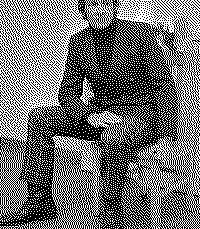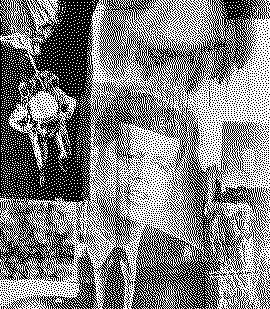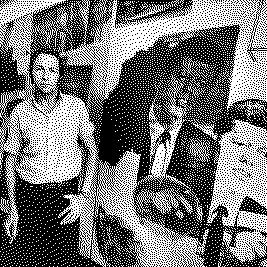Artists/Robert Rauschenberg
Fast Facts
Combines and Mixed Media
Rauschenberg is best known for his "Combines," a series of works created between 1954 and 1964 that blur the lines between painting and sculpture. These pieces incorporate everyday objects such as fabrics, newspapers, and even taxidermied animals, integrating them into the canvas to create a three-dimensional effect. Examples include "Monogram" and "Canyon," which showcase his innovative approach to mixed media (TheArtStory) (MoMA).
Integration of Found Objects
Rauschenberg's use of found objects in his art was revolutionary. He often sourced materials from the streets of New York City, allowing chance encounters with discarded items to dictate the direction of his work. This method emphasized the relationship between art and life, challenging traditional notions of what could be considered art (TheArtStory) (Robert Rauschenberg Foundation).
Experimentation with New Techniques
Rauschenberg was constantly experimenting with new techniques and materials. In the early 1960s, he embraced silkscreen printing, incorporating mass media images into his paintings. Works like "Skyway" reflect his response to the overwhelming influence of television and magazines, capturing the frenetic pace of American culture at the time (Artsy) (MoMA).
Collaboration and Technological Innovation
Rauschenberg frequently collaborated with other artists, performers, and engineers. Notably, he worked with Billy Klüver of Bell Laboratories to create technologically driven installations such as "Oracle" and "Soundings." These projects explored the intersection of art and technology, exemplifying his multidisciplinary approach (Artsy) (Robert Rauschenberg Foundation).
Influence on Contemporary Art
Rauschenberg's innovative techniques and willingness to incorporate diverse materials have had a lasting impact on contemporary art. His work paved the way for later movements such as Pop Art and influenced a generation of artists who sought to break down the barriers between different art forms (Britannica) (TheArtStory).
Biography



Robert Rauschenberg, born Milton Ernest Rauschenberg on October 22, 1925, in Port Arthur, Texas, was a pivotal figure in American art, whose early works anticipated the Pop art movement.
Rauschenberg's journey into the art world began somewhat serendipitously. Initially unaware of his future path, his interest in art was sparked during a visit to an art museum while serving in the U.S. Navy during World War II. This experience led him to pursue art education first at the Kansas City Art Institute and then at the Académie Julian in Paris, where he met his future wife and collaborator, Susan Weil. In 1948, Rauschenberg and Weil enrolled at Black Mountain College in North Carolina, where Rauschenberg was influenced by Josef Albers, despite their differing views on art. Albers' rigorous teaching methods aimed to discipline Rauschenberg's approach, but it was his encounter with John Cage, a composer of avant-garde music, that truly aligned with his experimental spirit.
Rauschenberg's artistic philosophy was profoundly shaped by his time at Black Mountain College, where he engaged with a variety of mediums including printmaking, drawing, photography, painting, sculpture, and theatre. His work was characterized by a radical blending of materials and methods, blurring the lines between different artistic mediums. He famously collaborated with Susan Weil on innovative projects like the blueprints series and participated in the vibrant New York art scene upon their return, working alongside notable figures such as Cy Twombly and Jasper Johns.
One of Rauschenberg's most significant contributions to art was the concept of "Combines," a term he coined to describe his works that fused painting and sculpture with everyday objects, challenging traditional distinctions between art mediums. His Combine pieces, such as "Bed" (1955) and "Monogram" (1955-59), integrated materials like quilts, pillows, and even a stuffed angora goat, redefining the concept of what could be considered art.
Rauschenberg's experimental spirit extended beyond Combines to include groundbreaking use of technology and collaboration with engineers, notably through the establishment of Experiments in Art and Technology (E.A.T.). His engagement with mass media imagery, particularly through the use of silkscreen in works like "Skyway" (1964), aligned him with Pop art and underscored his interest in reflecting contemporary life.
Throughout his career, Rauschenberg remained committed to exploring the intersections between art and life, a philosophy that led him to create works that resonated with a wide audience and influenced subsequent generations of artists. His legacy includes not only his diverse body of work but also his contributions to fostering collaborations between artists and engineers, expanding the possibilities of art in the modern era.
Rauschenberg's life was as layered and multifaceted as his art, marked by significant relationships and collaborations that enriched his creative output. After separating from Susan Weil, he had relationships with several artists, including Twombly and Johns. His partner for the last 25 years of his life was artist Darryl Pottorf. Rauschenberg's death on May 12, 2008, on Captiva Island, Florida, marked the end of an era in American art but left behind a legacy that continues to inspire (Wikipedia) (Encyclopedia Britannica) (The Art Story).
Series
-

White Paintings
-

Black Paintings
1951–1953
-

Red Paintings
1953–1954
-

Scatoli Personale
1952–1953
-

Combines
-

Transfer Drawings
-

Experiments in Art and Technology (E.A.T.)
-

Silkscreen Paintings
1962–1964
-

Trophies
-

Cardboards
1971–1972
-

Early Egyptians
1973–1974
-

Jammers
1975–1976
-

Gluts
1986–1989
-

Urban Bourbons
1988–1996
-

Scenarios
-

Runts
Importance
Robert Rauschenberg is considered an important artist for several reasons that span the breadth of his career, his innovative artistic techniques, and his influence on subsequent art movements.
Blurring the Lines Between Media
Rauschenberg was instrumental in dissolving the boundaries between painting and sculpture through his "Combines," which integrated two-dimensional collages with three-dimensional objects, creating a new art form that incorporated everyday items and materials (The Art Story) (Artsy).
Innovative Use of Materials
He was known for his use of non-traditional materials and objects, including items picked up from the streets of New York City, which he incorporated into his artwork, challenging traditional definitions of what could be considered art (TheCollector).
Collaboration Across Disciplines
Rauschenberg was a pioneer in collaboration between the arts and technology. His work with Bell Laboratories research scientist Billy Klüver led to the creation of sound and light installations that were ahead of their time. This partnership also led to the foundation of Experiments in Art and Technology (E.A.T.), an organization aimed at promoting collaborations between artists and engineers (Artsy).
Cultural Exchange and Social Engagement
His Rauschenberg Overseas Culture Interchange (ROCI) project was a notable effort to foster cross-cultural understanding and dialogue through art. Traveling to various countries, Rauschenberg aimed to use art as a means of encouraging positive social change, particularly in places where experimental creative expression was restricted (Artsy).
Continuous Evolution and Experimentation
Throughout his career, Rauschenberg never ceased to experiment with new materials and techniques. From his early Combines to his later work with digital printmaking, he constantly explored new avenues for creative expression, reflecting his belief in the integration of art and life (Wikipedia) (Artsy).
Influence on Future Generations
Rauschenberg's work anticipated and influenced the Pop Art movement. His approach to art, combining high culture with popular imagery and everyday objects, paved the way for artists like Andy Warhol and Roy Lichtenstein. Moreover, his willingness to challenge the status quo and explore the relationship between art and technology has left a lasting impact on contemporary art (Wikipedia) (The Museum of Modern Art).
Technique
Robert Rauschenberg's artistic techniques were groundbreaking and varied, spanning across different mediums and methodologies throughout his career.
Combines
Rauschenberg is best known for his "Combines," which blurred the lines between painting and sculpture by incorporating everyday objects into his works. These pieces featured a mix of paint and found objects, creating a new form of art that was neither painting nor sculpture but something in between (The Art Story).
Use of Non-Traditional Materials
Throughout his career, Rauschenberg experimented with a wide array of materials, including dirt, gravel, newspapers, and objects found on the streets of New York. He used these materials in innovative ways, such as pressing gravel into pigment or creating paintings with newsprint backgrounds (The Art Story) (Wikipedia).
Silkscreening
Rauschenberg incorporated silkscreen techniques into his artwork, allowing him to transfer photographs onto canvas. This method was a significant departure from traditional painting techniques and linked his work to the burgeoning Pop Art movement of the 1960s (Wikipedia).
Technological Exploration
His collaboration with engineer Billy Klüver led to the creation of "Experiments in Art and Technology" (E.A.T.), fostering partnerships between artists and engineers. This collaboration resulted in innovative sound and light installations, such as "Oracle" and "Soundings," showcasing Rauschenberg's interest in incorporating technology into art (The Art Story) (Artsy).
Performance and Dance
Rauschenberg's interest in dance and performance led to collaborations with choreographers like Merce Cunningham, for whom he designed costumes and sets. This interdisciplinary approach further exemplified his belief in the fusion of art forms (The Art Story).
Printmaking and Lithography
His work in printmaking and lithography, particularly his collaborations with Tatyana Grosman and Universal Limited Art Editions, demonstrated his willingness to explore and push the boundaries of traditional printmaking techniques (The Art Story).
Photography and Digital Printmaking
Later in his career, Rauschenberg turned to photography and digital printmaking, utilizing color printers to create large-scale, high-resolution works on paper. This phase of his work underscored his ongoing exploration of new materials and technology in art (Artsy).




